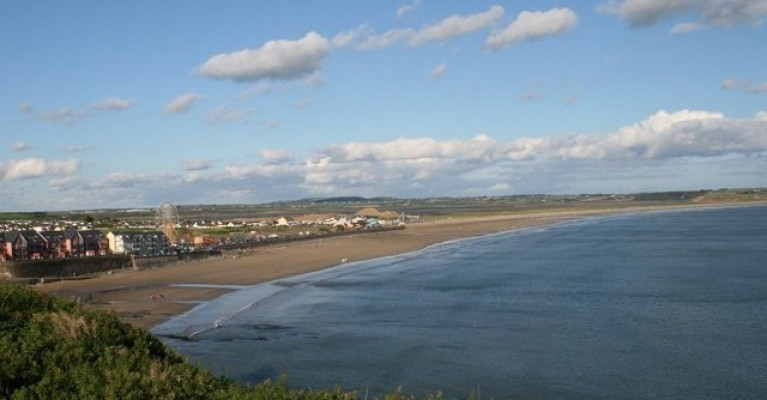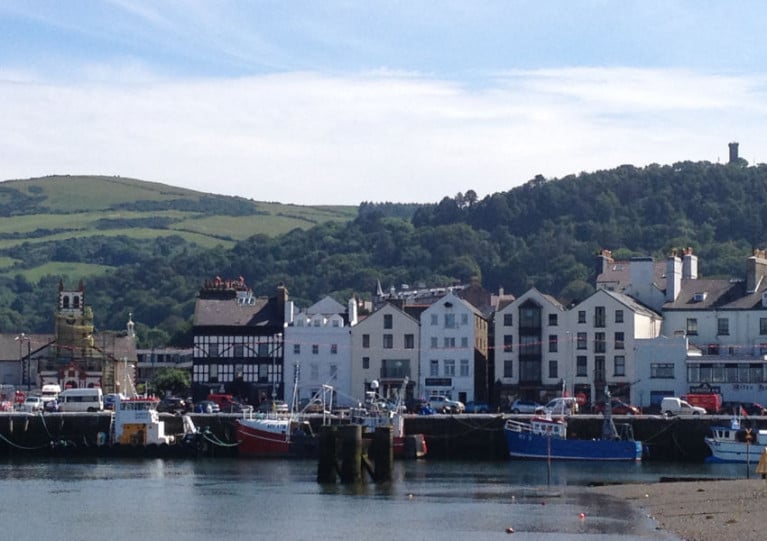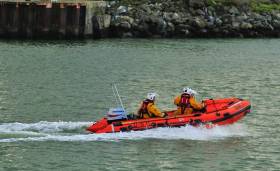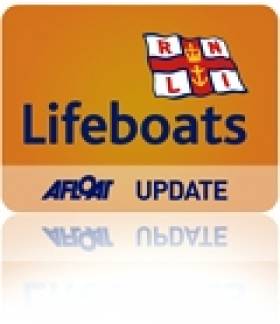Displaying items by tag: jet ski
Lough Neagh Rescue Alerted to Overturned Jet Ski
On Monday, May 2 Lough Neagh Rescue was alerted by Belfast Coastguard to reports of an overturned Jetski in Antrim Bay on the Northeast corner of what is the largest freshwater lake in the British Isles and Ireland.
Two casualties were taken from the water onboard the lifeboat and then were transferred to Antrim Marina where they received medical attention before being handed over to the Northern Ireland Ambulance Service.
Also at the scene was the Lough Neagh Coastguard Rescue Team which is based at Kinnego Marina on the Southeast corner of the Lough.
Lough Neagh Rescue is a voluntary search and rescue organisation based on the shores of Lough Neagh.
Volunteer lifeboat crew at Fethard RNLI were requested to launch their lifeboat by the Irish Coast Guard yesterday afternoon (Saturday 17 July) at 5.34 pm, to assist a person in difficulties on their jet ski.
The crew launched the D-Class lifeboat Naomh Dubhán on the beach under Duncannon Fort. Duncannon beach lifeguards and Rescue 117 Helicopter were also involved in the rescue.
The conditions were calm with a light breeze on the hottest day of the year.
As the lifeboat proceeded to the area where the jet ski was located, it was established from communications with the Irish Coast Guard that the male was assisted ashore by the lifeguard and locals and was receiving casualty care at Duncannon Harbour. Fethard lifeboat crew recovered the beached jet ski, towing it into the harbour and then rendered assistance with the care of the casualty.
Speaking about the incident Fethard RNLI Volunteer Helm John Colfer said, "It was a very positive outcome showing the teamwork achieved by the lifeguards, the Coast Guard helicopter and ourselves."
Man Dies in Jetski incident in Co Fermanagh
The PSNI has confirmed that a man's body was recovered from a river in Co Fermanagh after what is believed to have been a tragic jet ski accident, reports Belfast Live.
The Emergency services attended the scene on the River Erne between Upper and Lower Lough Erne, close to the village of Bellanaleck.
The emergency call was received around 3.40 pm on Saturday (3rd) that a person had entered the river, and the incident was attended by the Police Service, the NI Ambulance Service and the Charity Air Ambulance with the Helicopter Emergency Service crew on board.
The Belfast Telegraph reported that First Minister Arlene Foster expressed her sadness at the death of the man who has been named Declan Ryan. She tweeted, "Very tragic news coming from Fermanagh today. My condolences to the family at this devastating time".
Very tragic news coming from Fermanagh today. My condolences to the family at this devastating time. https://t.co/CYlwUHQdpW
— Arlene Foster #WeWillMeetAgain (@DUPleader) April 4, 2021
Jet Ski Engine Problems Leads to Tramore RNLI Call Out
Tramore RNLI Lifeboat in County Waterford was launched to assist jet-skiers in difficulty yesterday.
The RNLI were alerted to the incident after a member of the public contacted the emergency services.
The lifeboat was launched at 14:39 and proceeded across Tramore bay to the Rinnashark channel.
On arrival, the crew discovered the jet-skiers had managed to return to shore following a problem with their engine.
The crew met with the owner of the jetski on Saleens and confirmed they were safe and in no need of medical attention.
The RNLI wish to remind everyone to check their equipment before they put to sea.
Jail for Jet Ski Novice Who Broke Isle of Man’s Pandemic Rules After Sea Crossing from Scotland
A man has been jailed for four weeks on the Isle of Man after breaking coronavirus rules by riding a jet ski from Scotland to the island.
As Sky News reports, 28-year-old Dale McLaughlan — who had never before used a personal water craft — embarked on difficult crossing in rough conditions last Friday (11 December) to visit his partner, whom he met on the island in the Irish Sea while working as a roofer in September.
It’s understood McLaughlan took the drastic measure after he was twice denied a visitor’s permit to the island, which has implemented strict access rules for non-residents to control the pandemic.
However, the move has cost McLaughlan dearly as local police confronted him at the weekend while he was on a night out.
“He was wholly inexperienced in operating a jet ski,” the Isle of Man’s deputy high bailiff said. “He deliberately attempted to avoid detection and circumvent the entry regulations in place to protect the Isle of Man.”
Sky News has more on the story HERE.
Jetski Kill Cord Incident at Benone Beach on the North Coast
Yesterday evening Coleraine Coastguard responded to a report of a person falling from a Jetski at Benone Beach. This popular Blue Flag beach stretches for over seven miles on the North Coast, from Downhill westwards to where it meets Magilligan Point at the mouth of Lough Foyle and forms part of one of Ireland's longest beaches.
The rider made it back to shore safely but unfortunately, the kill cord had been fitted incorrectly and the jetski continued under its own power.
Thankfully, no one was in the water close to the craft and the jetski headed offshore. It was eventually retrieved by Portrush Lifeboat several miles away close to Inishowen Head at the eastern end of the Foyle estuary in Co. Donegal.
Coleraine Coastguard said “A kill cord is an inexpensive but vital piece of safety kit, shutting down the engine of a vessel should the driver fall overboard. A vessel out of control can be a lethal weapon”.
Wicklow Lifeboat Assists Drifting Jet Skier
#RNLI - Wicklow RNLI's inshore lifeboat launched shortly after 5pm yesterday evening (Sunday 25 September) to assist a person on a broken-down personal water craft.
The man had set off from Wicklow Harbour and was about a mile offshore when the engine cut out, leaving him adrift and unable to get ashore.
The lifeboat was alongside the casualty within minutes of launching and the crew carried out a quick assessment before towing the craft back into Wicklow Harbour and landing the man safely ashore.
Fastest Jet Ski Ever Built to Be Unveiled at Australian Marine Expoest
#jetski – The most powerful Jet Ski on the planet will be officially unveiled to the Australian public at the 2014 Gold Coast International Marine Expo from October 17-19.
The adrenalin-pumping, limited edition 2015 Kawasaki Ultra 310R draws from decades of championship-winning racing experience and will be marketed as the "ultimate sport personal watercraft"
John Moyle from Gold Coast-based Jet Ski World said: "The fastest production Jet Ski ever built just got even faster!
"There's been a lot of anticipation with this model," he said. "Kawasaki has played its cards very close to its chest so very few details have been made public before its official launch at the Expo.
"What we CAN tell you is that it will be everything the jet ski lover wants and expects from a Kawasaki!"
Kawasaki has revealed a few details to fuel the excitement among enthusiasts.
The 310R will come equipped with a high-performance deep-V hull design, which offers superb straight-line tracking and precise cornering, as well as a motocross-style electro-polished stainless steel handlebar to enhances its sport-riding capabilities while also providing excellent all-day comfort.
"It will have an upgraded 1498cc, liquid-cooled four-cylinder engine, a new 12-position handlebar mount which can be adjusted for reach and height to allow operation while standing or sitting and to suit a wide range of riders and conditions, as well as a new Sportseat offering a special support bolster and a grippy KX-motocross-like seat cover for hard sport riding.
"Add to that new Aggressive graphics to reinforce its hard-core sport capabilities."
Event and Marketing Manager Emma Milne said the fact Kawasaki had chosen the 2014 Gold Coast International Marine Expo to launch its latest flagship model was confirmation of the event's significance to the marine leisure industry.
"Expo showcases all things aquatic – from super yachts to kayaks, fishing equipment to sail boats... and everything in between," she said.
"We have a growing number of new product releases for 2014, including a massive range of personal watercraft accessories to take the fun to a whole new level, versatile and fun inflatable stand up paddleboards, as well as a new super yacht from Whitehaven Motoryachts.
"We are still talking to exhibitors so we expect to announce even more exciting new product releases in the next few weeks."
In fact, high demand for exhibitor space at the event has already prompted organisers to expand the event site – yet another indication this year's Expo will be the biggest and best yet.
Last year, more than 21,000 people attended the not-for-profit Expo – an event run by the marine industry for the marine industry and, according to Ms Milne, it is the best chance to get afloat before the summer and Christmas seasons.
"The 3km-long Expo circuit will also feature a huge range of live attractions and demonstrations every 15 minutes, including the amazing extreme high-diving show," she said.
"It really is going to be a whole lot of fun."
Lifeboat Rescues Jet Skiers in Wicklow Harbour
#LIFEBOATS - The Wicklow People reports on the lifeboat rescue of two jet skiers at Wicklow Harbour last week.
Wicklow RNLI was dispatched at 4.15pm last Thursday to the two men who were left stranded after one jet ski was submerged while the other suffered engine failure.
A passing fishing boat also offered assistance by towing one of the jet skis and its rider back to port.
No injuries were reported in the incident.
Not your Average Summer Holiday
Colin Gregg, Dugy Ward and Gary Forber have just completed an amazing jet ski adventure covering some 4570 miles at sea from Orkney to Monaco aboard their Yamaha FX HO Cruiser Jet Skis. They called it the European Jet Ski Challenge.
Setting off on 1 May 2011 and arriving in Monaco 26 days later, the three adventurers raised over £21,000 (excluding Gift Aid) for two charities: Macmillan Cancer Support and Make A Wish Foundation.
In order to reach Monaco this summer, they needed the toughest and most reliable marine navigator around. So they chose the Garmin GPSMAP 451 a compact chartplotter featuring an ultra-bright 4" colour display. Colin says: "I chose the best navigator on the market to give me the greatest chance of completing the challenge. During the voyage it endured waves up to 8 metres and withstood 4570 miles in all weathers. It is however, still in perfect condition and ready for our next adventure!"
Previously, Colin and Dugy successfully circumnavigated the UK mainland in a record time of 11 days 8 hours and 45 minutes, raising nearly £25,500 for Macmillan Cancer Support and establishing a new world record.
For more information please visit http://www.europeanjetskichallenge.co.uk/



































































